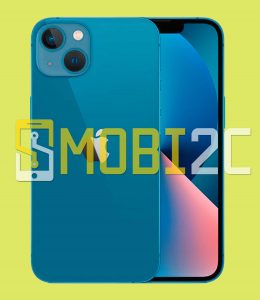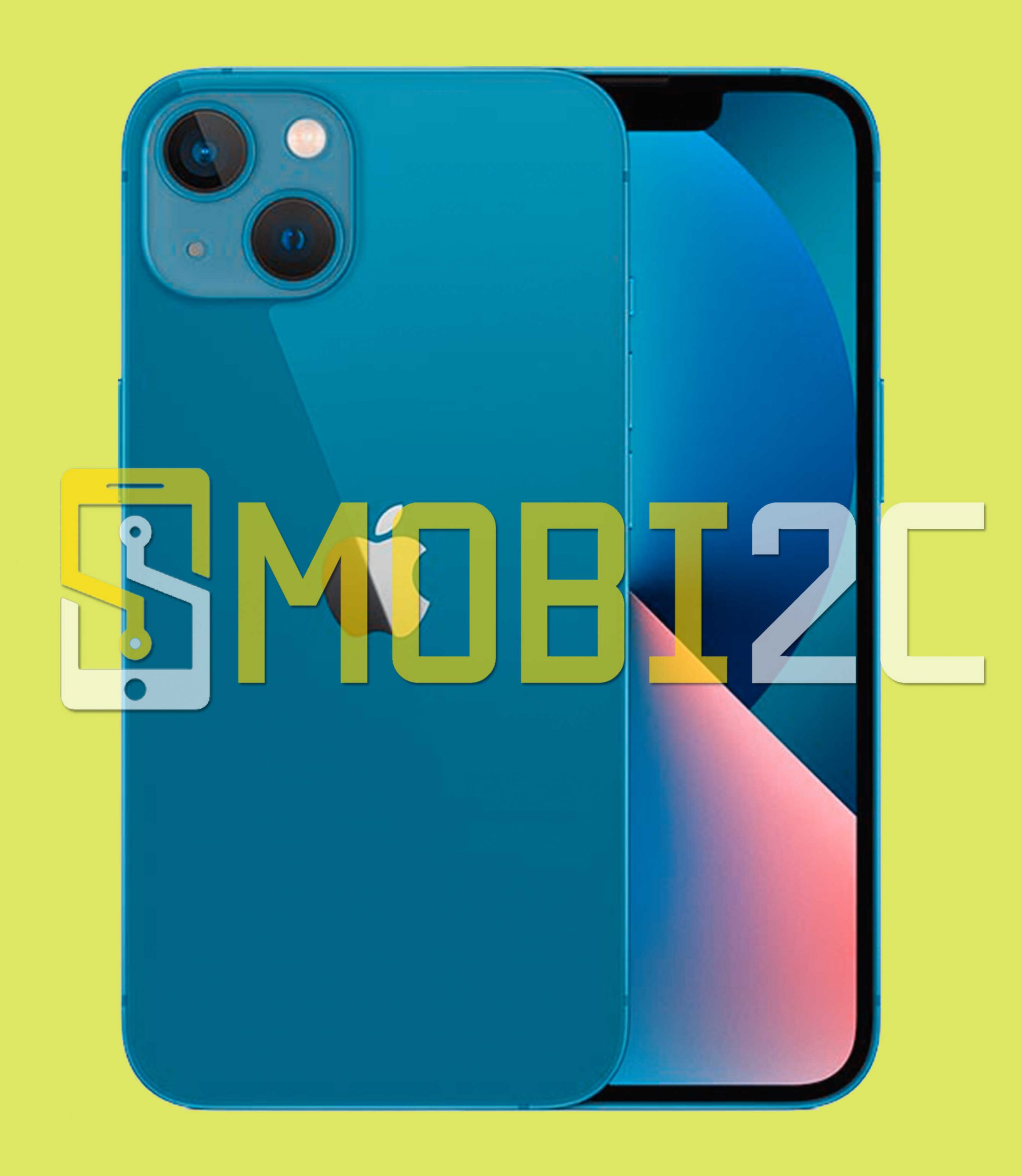iPhone 13 Phone Review
iPhone 13 Design

The main phone iPhone 13 responded with a pair of design changes for this year, and these changes included the distribution of the rear cameras within the phone in a very diagonal way and not vertically as was common, while the opposite change was to cut back the scale of the front slit of the ancestor camera by 20%, although it still contains a sensor TrueDepth to live the depth of front shots, and recognize facial details to unlock the phone.
In fact, the notch isn’t any longer significantly reduced in size for everyday tasks on the phone, which is obvious when watching video contents on the phone in landscape mode.
The location of the buttons is slightly different on the iPhone 13 compared to what it absolutely was within the predecessor model, because the power button has been moved down a bit on the correct side, further because the volume buttons and also the mute button on the left edge.
On the opposite hand, Apple provided CeramicShield glass for the iPhone 13 screen, encasing it from the rear with durable glass yet, while surrounding it with flat edges and an aluminum frame matching the colour of the phone.
The phone also complies with the IP68 standard and thus it’s immune to water and mud, but it failed to include a fingerprint sensor, despite the users watching for this feature in light of the spreading epidemic and also the failure of the Face ID sensors to detect facial details with the position of masks.
Currently, the iPhone 13 is facing the matter of unlocking using Apple Watch compatibility with smart watches, and Apple has stated that there’s this problem and stated that it’ll be fixed soon.
Finally, the iPhone 13 is on the market in five colors, including pink, blue, black, gold and red.
Phone Screen and Refresh Rate Details
Apple preferred to limit the supply of a variable refresh rate of 120 Hz to the professional models of its current phones, but it didn’t deprive the iPhone 13 of the distinctive OLED screen, which works per the Super Retina XDR display technology to come back with distinctive quality and brightness higher by 28% in comparison to the iPhone screen 12, where this new panel contains 800 lumens rather than only 600 in last year’s models, and this increase in units came at higher brightness levels, and that we may notice a transparent difference between the 2 screens when using phones in daylight.
When this screen was put into the test criteria, it illuminated 795 units of sunshine compared to 702 units on the Galaxy S21 main phone screen, and therefore the DCI-P3 color gamut on the iPhone 13 screen was about 78.1%, and it also showed 110.2% of the sRGB gradient field.
There is no real question about the colour accuracy of this screen, because it reduced the Delta-E error rate to 0.26 compared to 0.29 within the Galaxy S21 and iPhone 12 phones.
On the opposite hand, some users have reported that the phone screen becomes unresponsive in certain places during use and it’s likely that Apple will fix this soon, as these are usually associated with a software bug within the software system.
The performance of the phone in photography
The iPhone 13 lenses haven’t only changed in terms of arrangement, but the sunshine collection rate has been affected further. This rate has been improved within the wide camera by 47%, a rise within the percentage within the predecessor model, because of Apple’s addition of the larger camera sensor, which includes a size of 1.7 micro pixels. .
On the opposite hand, the ultra-wide camera is now able to capture fourfold more details in an exceedingly single image, and it also offers better low-light performance, and reduces noise more actively.
And if we don’t just like the colors that iPhone 13 offers by default, we are able to change them with the new Photographic Styles feature, and therefore the camera app has collected a number of the most modes that we are able to switch to, including Standard mode, Vivid mode, High contrast, Warm mode and eventually Cold Color mode.
In detail in these modes, we will say that the task of the high contrast mode is targeted on reducing blur within the images, while the dynamic mode is anxious with showing the background colors in greater depth.
By comparing the photographs of the iPhone 13 with the flagship Galaxy S21 Ultra, the colours of the Apple phone appeared in greater depth, and therefore the shadow areas appeared more detailed than the samples of the opposite phone.
Thanks to the new features that Apple has introduced in its current phones, video recordings will inevitably enter the higher direction, because the new cinematic mode, for instance, measures the depth of targets within the video clip to automatically shift focus from one target to a different when the frames change position, or someone changes their position Within the video, it’s also worth mentioning here the bokeh effects, which shift the main target of the camera from the background of the image to the most subjects before of it.
iPhone 13 may take your time to acknowledge moving targets, and its accuracy is restricted to 1080p only, and that we can’t actually increase it, because it consumes more cupboard space during this mode, although 4K recording continues to be available during this phone It comes within the right quality additionally, but in standard mode, not cinematic.
On the opposite hand, standard recording mode offers decent performance due to noise reduction, better dynamic range and improved rendering, which might separate things from each other, like faces, sky, etc.
Phone Performance and Capabilities
The basic phone iPhone 13 works with the advanced processing chips A15 Bionic, which is comparatively advanced over the A14 chipsets in phones last year, because it contains six cores for the central processing and 4 other for the graphics processing unit, as within the A14 chipset, but the Neural Engine, which consists of 16 cores, was added to that. It works for machine learning using AI compared to only eight cores within the previous chips.
Apple has stated that its latest chipset is characterized by 50% faster performance in terms of CPU and 20% increase in graphics unit performance, and this warns us that the phone will perform its daily tasks very smoothly, and this is applicable to intense games and imaging capabilities moreover.
In the benchmarks test, Geekbench 5, these chips received approximately 4129 and 1684 points within the single and multi-core range, respectively, and so it outperforms its previous counterpart iPhone 12, yet because the Galaxy S21.
The previous ruling also doesn’t differ when talking about the performance of the graphics unit, because the iPhone 13 came in about 56 frames within the 3DMark tests, compared to 51 frames for the iPhone 12 model and 33 frames for the Samsung Galaxy S21 Ultra.
When testing the phone in converting videos from 4K resolution to 1080p, it had been ready to accomplish this task in an exceedingly time of 25.9 seconds, while the iPhone 12 took about 26.5 seconds and a full minute for the S21 phone.
iPhone 13 Battery Activity
When announcing the iPhone 13, Apple stated that its battery would last about an hour and a half longer than the battery of the predecessor model, because of the enlargement of its capacity and therefore the efficiency of the phone chips in managing energy consumption, and Apple didn’t err therein estimate, but rather underestimated this battery because it lasted for a time. Longer than that when testing the phone in web browsing with 5G networks enabled and a sufficient level of brightness, this battery lasted for roughly 11 hours, which suggests that it’s over two hours longer than the battery of the predecessor phone.
On the opposite hand, Apple’s 20-watt charger might have about an hour to produce the phone with full power, although the new generation phones have reached the fastest wired charging speeds.
The MagSafe wireless charger also works at an influence of 15 watts, and a few may prefer it because it’s magnetic and doesn’t have a Lighting port.
The OS of The Phone
iPhone 13 runs iOS 15, which brings audio and performance improvements to FaceTime, and promises users to experience content viewing with friends in its future updates, while Messages has received a replacement sharing feature for photos, articles, and links likewise.
And after we start mentioning the benefits of iOS 15, we should always mention the new Focus mode, which allows us to filter some notifications supported our preferences, and therefore the people sent, in addition as provides us with a summary view of all the news directly to avoid continuous alerts.
The Safari browser has been centered at the underside fringe of the phone’s home screen and this location can still be changed, while the Maps and Weather apps are improved to seem more professionally detailed.
Finally, the Live Text feature replaced Google Lens during this phone to acknowledge texts written in a picture, whether to induce texts translated or something associated with them.
Conclusion
Apple was keen to support its new phone, iPhone 13, with the most effective features and specifications required by the everyday life of users. during this phone and its loss of the high update could also be one in every of the points that reduced the value of the phone from the professional models, ranging from the worth point of $ 800 for the 128 GB models, and so rising in step with the available space for storing.
